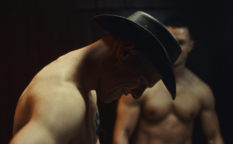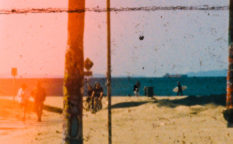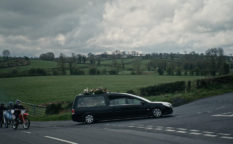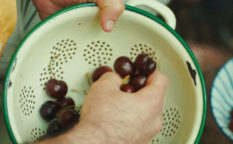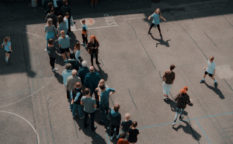Antonio Méndez Esparza: “We had to adapt to the rhythm of the court”
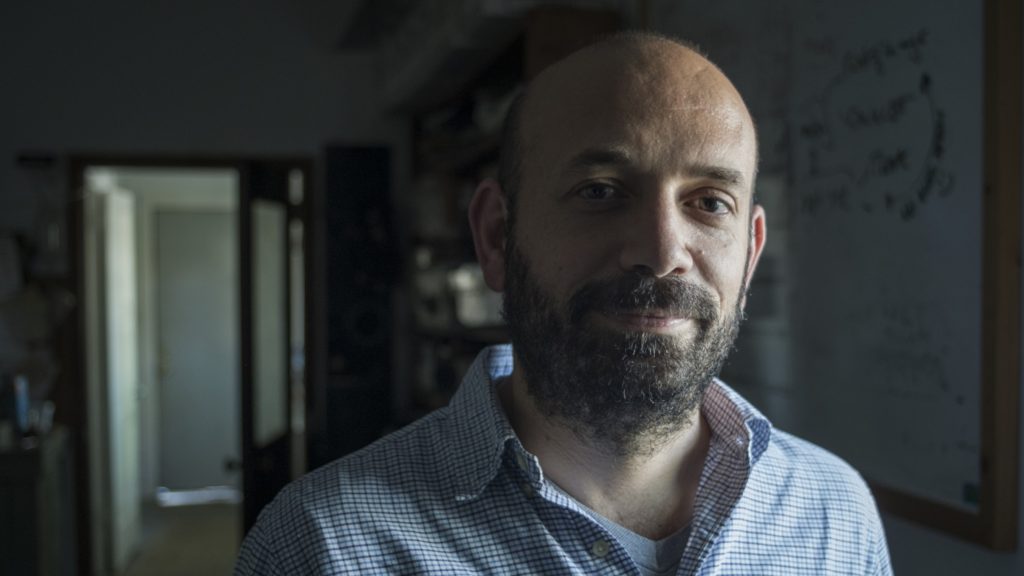
Antonio Méndez Esparza was literally in the middle of location scouting for his next film when we finally had the oportunity to do this interview. The initially audio only conversation was briefly switched to the video modus, just to give us a glimpse of the Madrid neighborhood the director was currently in. Despite of a very busy schedule, the Spanish director was very generous with words, and in this lengthy interview we spoke about his debut documentary Courtroom 3H that had its world premiere last September at San Sebastian Film Festival, and which has just had its North American premiere at AFI Docs.
The film is following multiple hearings, and two trials at The Tallahassee Unied Family Court (Florida) which specialises in judicial cases involving minors. In this court, which is actually the only one in the USA that deals with matters relating to children and parents, Chief Judge Jonathan Sjostrom, whose concern (and not only his, but such of the lawyers and the social workers involved in the hearings/ trials) is to reunite the families as safely as possible, has to decide about a great deal of destinies almost every working day.
The Tallahassee Unied Family Court is a place where the families get summoned when accused of abuse, abandon or negligence in regard to the minors, and the film concentrates on people between institutions, and “a certain defenselessness of the citizen before the judicial systems, since the citizen is at the mercy of the law – fair or unfair.” (director’s statement)
Can you tell us something about the motives to make this film?
This is my first documentary, and although my previous work was always pretty much bordering on documentary, it was still fiction. You were protected by that in the sense that it was the story you were telling, and not the characters being themselves.
I am from Spain and I live in the USA, more precisely in Tallahassee where I teach at the university. Only with my previous film, I started to understand the place where I live. It was a vital experience for me to learn about the court system, but I had the feeling that the court wasn’t depicted truthfully, and that it was more like a plot tool. There was so much more to cover and to discover there, and much more to think about the families with certain resilience. I wanted to take a deeper look. That was the reason why we decided to do Courtroom 3H. It was in a way a sense of unfinished business. We still have more to explore. We opened the door in the process of making the previous film – Life and Nothing More, but I thought that there was still much to discover there, and that’s what we tried to do. It was a vital response to make this film.
It’s quite intriguing that you were allowed to be at the presentation of cases and hearings, and later on at trials. I didn’t know that the courtrooms were open to the public during the hearings. On the other hand, trials are closed. Was it very difficult to get the permit to film them?
This is a bit where I could argue that there is even a bit of tension between the legal and the individual rights. Court proceedings are public per se. They are always filmed, because they are basically treated as public records. There was this big argument about what a public record is. Is a photograph a public record? Is a video a public record? There were always legal arguments coming from both sides.
Currently the US, at least in Florida, believes that a video tape is a public record, so that’s what it is, and we were protected by the law. And such things are being regularly recorded. You as a private citizen you could film as much as you like, and that’s interesting because there is a huge argument about it if it is private or not. The US citizens versus the State. The reason why we were filming the trials was the transparency in the sense that institutions should be accountable. You know that one of the main articles of the US constitution is about the freedom of information and the freedom of press, because they believe that this could be the tool to control the power of the state, so we embraced that. Then of course the trials were a much different subject because those are sealed proceedings, and not public. So for those we had to ask for the permission, and some of the material had to be erased.
We were also aware of the importance of not showing the families during the trials. There were certain conditions, because this court serves to protect the children. That’s their main goal, so the question was what’s more important – to show the atmosphere, or protect the children. I am sure that you may sense the conflict of interests that may arise, but at the end we were able to get the permission by the judge, and by all participants. This doesn’t mean that there were no objections while we were filming the hearings – they were, but we were protected by the law. For the trials that we were finally able to record, we had to actually have the judge releasing the information, so we had the hearings and the sentence that we were allowed to use as long as we change names, protect the identity of children, and don’t show the families who were on trial.
I noticed that a couple of faces in the first part were also blurred.
Those were always minors, under 18.
Can you tell us something about the position of the cameras, considering the limitation of the space?
Of course we were very limited. We couldn’t really be in the line between the judge and them, or so to say in the middle of the line of action. We could only be positioned low and near the judge. The positions were clear right from the beginning. We didn’t have so many, and you know when we did something different with the zoom lens, we tried to keep it a bit broad. I mean, we would make shots on the spot quite quickly trying to figure out if they come along, and who do we show.
If a family came, let’s say a mother and a father with three or four children, we could try to put them all in the frame. Sometimes the lens wasn’t wide enough, and we had to make choices. Sometimes someone would come, and we would know they were the only one appearing at the hearing. That was a bit tight, but then, little by little, we started to understand who could be important, who could be an advocate for them, or an adversary for them.
The department for the families was always positioned to the left, the opposite side to the right, so we started to change things a bit. The second camera was always shooting the judge, but we didn’t use it that much in the movie, because it wasn’t that good, and it was very different. In our own way, we didn’t let the language of the film to remain the same, and we tried to change it a bit as we begin to realize what this movie really was, and what we wanted to tell.
Before we started shooting, I said to myself that this was going to be a movie about families, but when the shooting actually started I realised that the film is equally going to be about the lawyers, social workers and about the judge. But that was not my first instinct. I understood quickly that there are other people in the courthouse who are making choices.
How much material did you have upon finishing the shooting? It is really well edited to the point that it creates a very interesting dynamic.
Making this type of film is not the same as shooting a fiction feature, when you can speed up things. We shot for about two months. Even though we officially had some 30 days of shooting, you have to remember that the courts are closed on Saturdays and Sundays. There are also public holidays, longer or shorter days, plus the fact that there are no hearings every day. I am sure that they are working all the time, but it is the other type of things they are doing. So you have to adapt to that rhythm of the court. We are not public employees, but we were there every day just waiting to see what was going to happen. So it took like two months to shoot the material. I think that we filmed around 300 cases, which is about 180 hours of footage. We had two cameras, so it’s 90 plus 90 maybe.
As there was no clear structure before we started, and we were trying to make a sort of an emotional centre to the piece, and work it out from there, giving it its shape. We took a bit of time to edit the footage. We worked a lot on the film structuring and on establishing a relationship between its elements, to be concise. It was very difficult because we were often very close to the material. So many times we would see things we considered important – what we saw or heard in the process: emotional, or revealing. We were disappointed when we had to cut something we liked. I think that “Courtroom 3H” is very fragile. The narrative is nimble, I think it exists, but it was tricky to make it work. I also think that we were very lucky. The last scene you see is the last scene we shot. When the lawyer left the room, we just knew we had an ending. We trusted that somehow what happened between those walls would be enough to truthfully depict the institution and its people and somehow make the narrative.
Have you spent some time in the court before you started shooting the film?
I finished Life and Nothing More in 2017, and I was thinking about making this documentary the same year, but it’s a delicate institution. The judge saw Life and Nothing More and he quite enjoyed it, but there was an air of uncertainty how to approach the subject. I kept going to the court, I spoke to him, and begin shooting in 2019. I went to court every now and then, I kept in touch with the judge. I listened to the proceedings, spoke to somebody, and then waited again. The fact that is it took two years of waiting and trying to find funding. I think that this time served the purpose: the judge and the department for families and others understood that what we wanted to do was sincere, that we had honest intentions and not just a wish to shoot. We showed interest.
Judge Jonathan Sjostrom has an incredible presence. I don’t remember seeing such level of understanding invested in people’s problems.
He is the Chief Judge of the Tallahassee Court, and I think that he feels some kind of social responsibility. He trues to care, and he is also very open about all the mistakes he made in the past. He’s been doing that job since 19 years, and I am sure if we started shooting the film 17 years ago he would probably be different, maybe much less understanding and more strict. Also the policy has changed, the times are different, but I am convinced that he is who you saw. The thing that was for me touching is the fact that besides the firmness of his decisions, he still cared about the person he had in front of him, and he tried to comfort them in a way, to treat them as human beings. He is not the kind of judge we remember from the past, There was a sense of punishment that is very present in the US law and on the US television, and that’s something I didn’t see in this court, which touched me a lot. We were in the court for two months, and he was always the same. I don’t think that you can pretend to be someone else for such a long time. Some days I thought of him as a priest who is lending his ear to people and searching for right words.
Have any of those people – the social workers, attorneys and the judge – watched the film?
Yes, of course. There were all kinds of opinions. I think that most of the people at least understood the artistic value of the film. Some lawyers were concerned about the way their clients were depicted, but they thought that the part with the families was an honest portrayal, and the judge thought it too. Of course, it’s my movie, but I also want people to be honest. The majority was very happy with the outcome. At the end of the day, they don’t want those things to remain just in the court. They want them to be reach people in order to make them understand the issues that are being played in the society, and that there can be a response to them. I think this is exactly what this film is trying to do.

